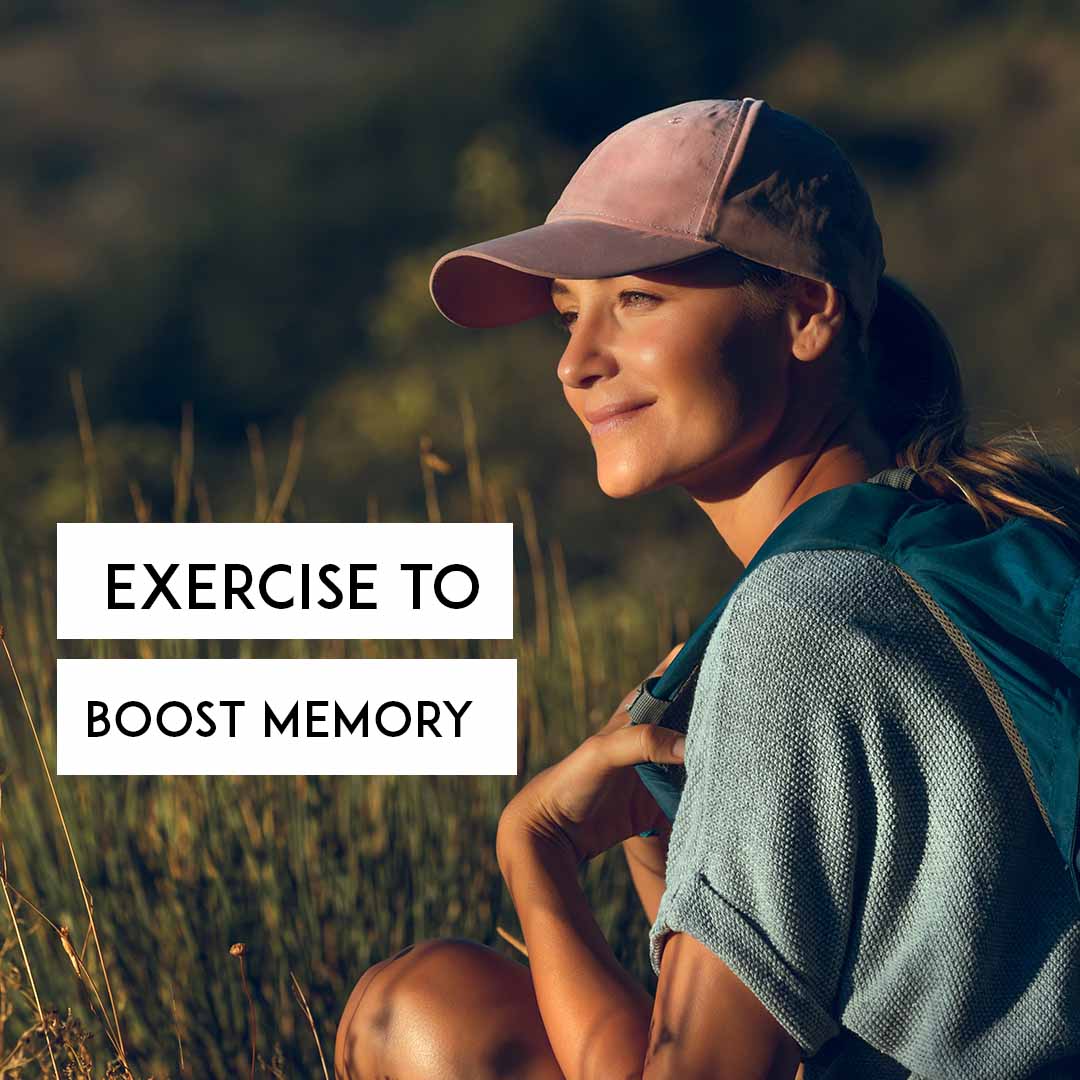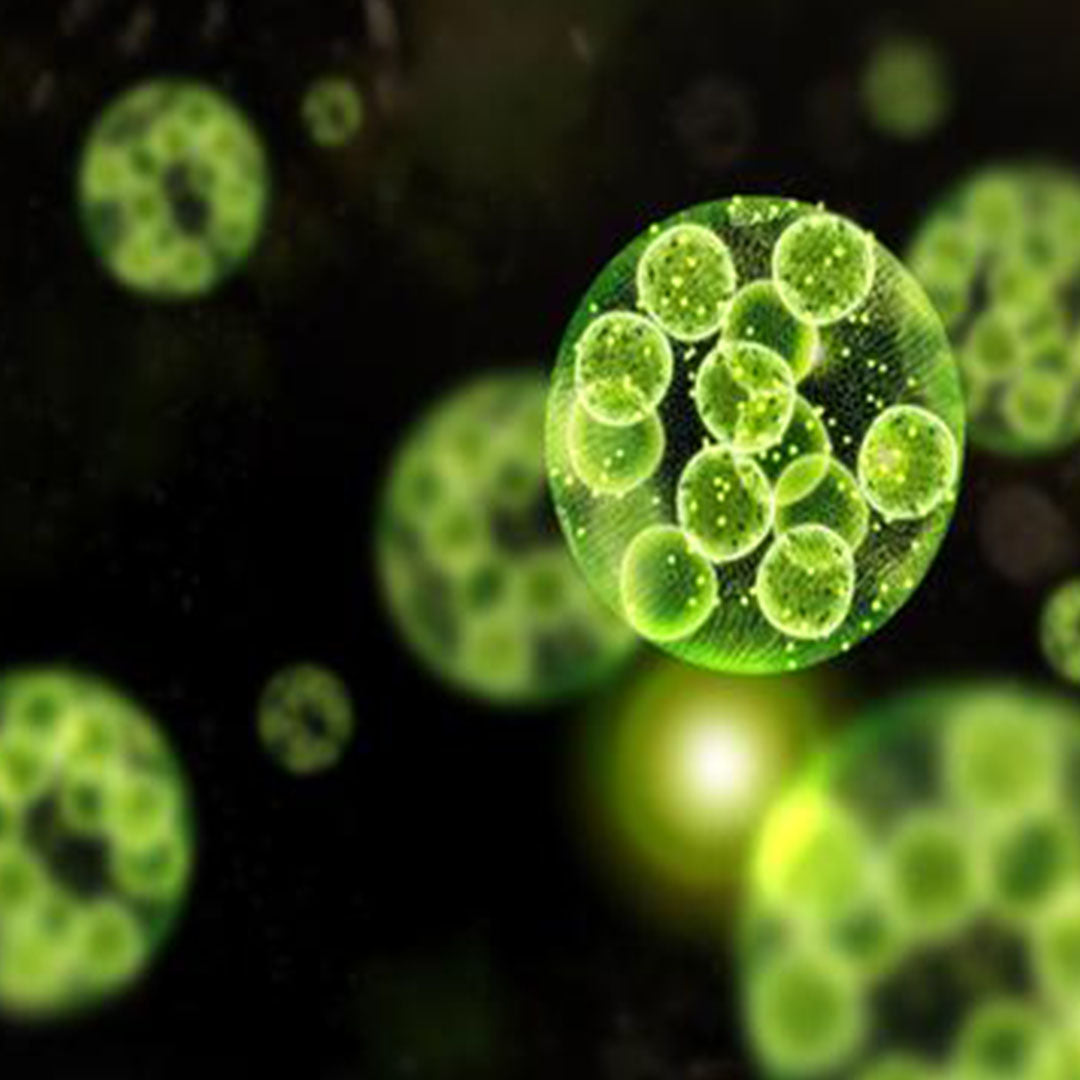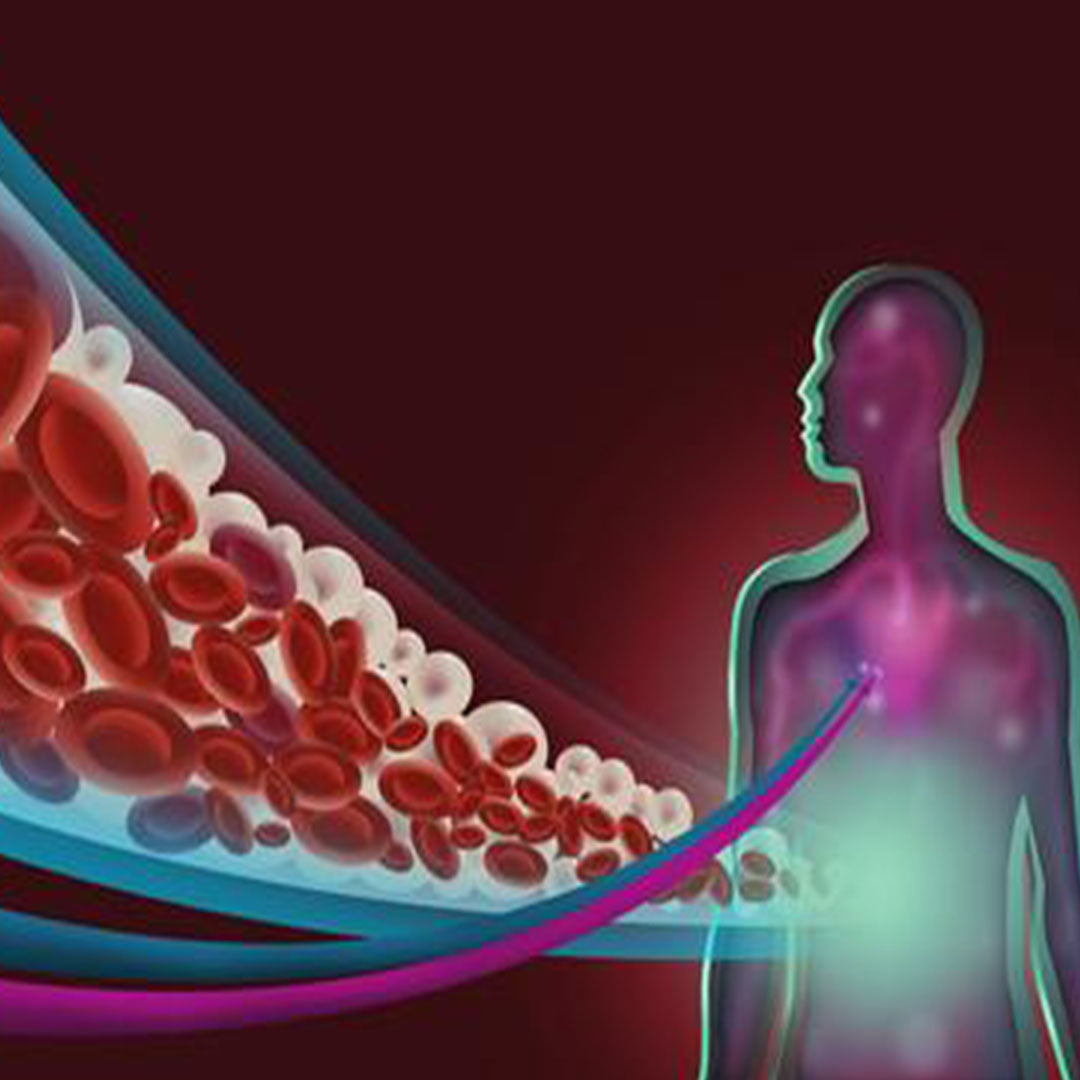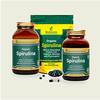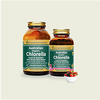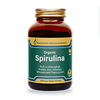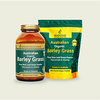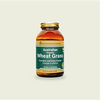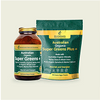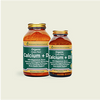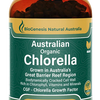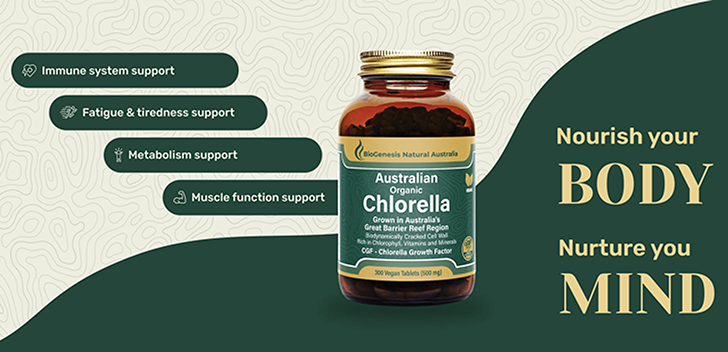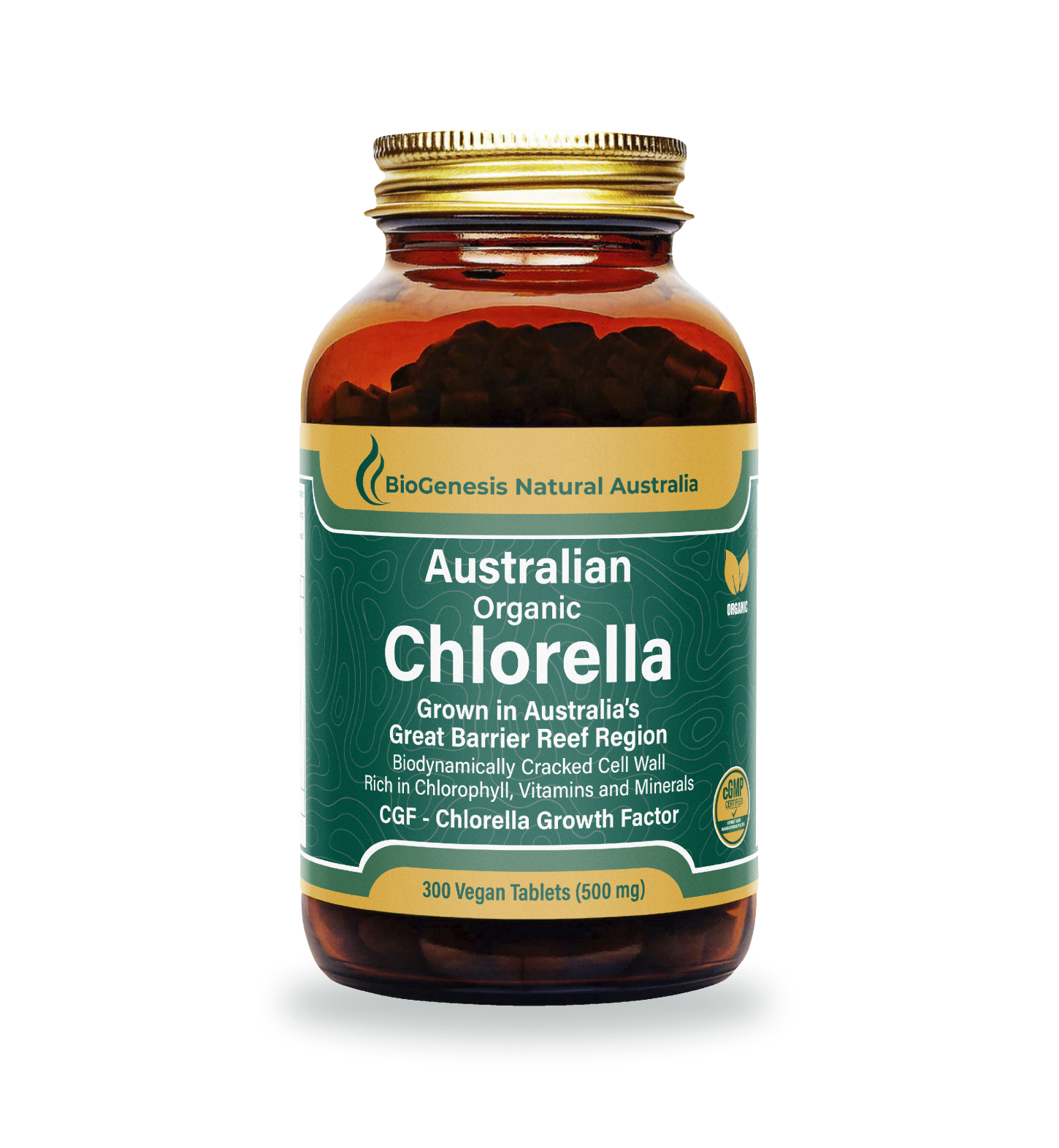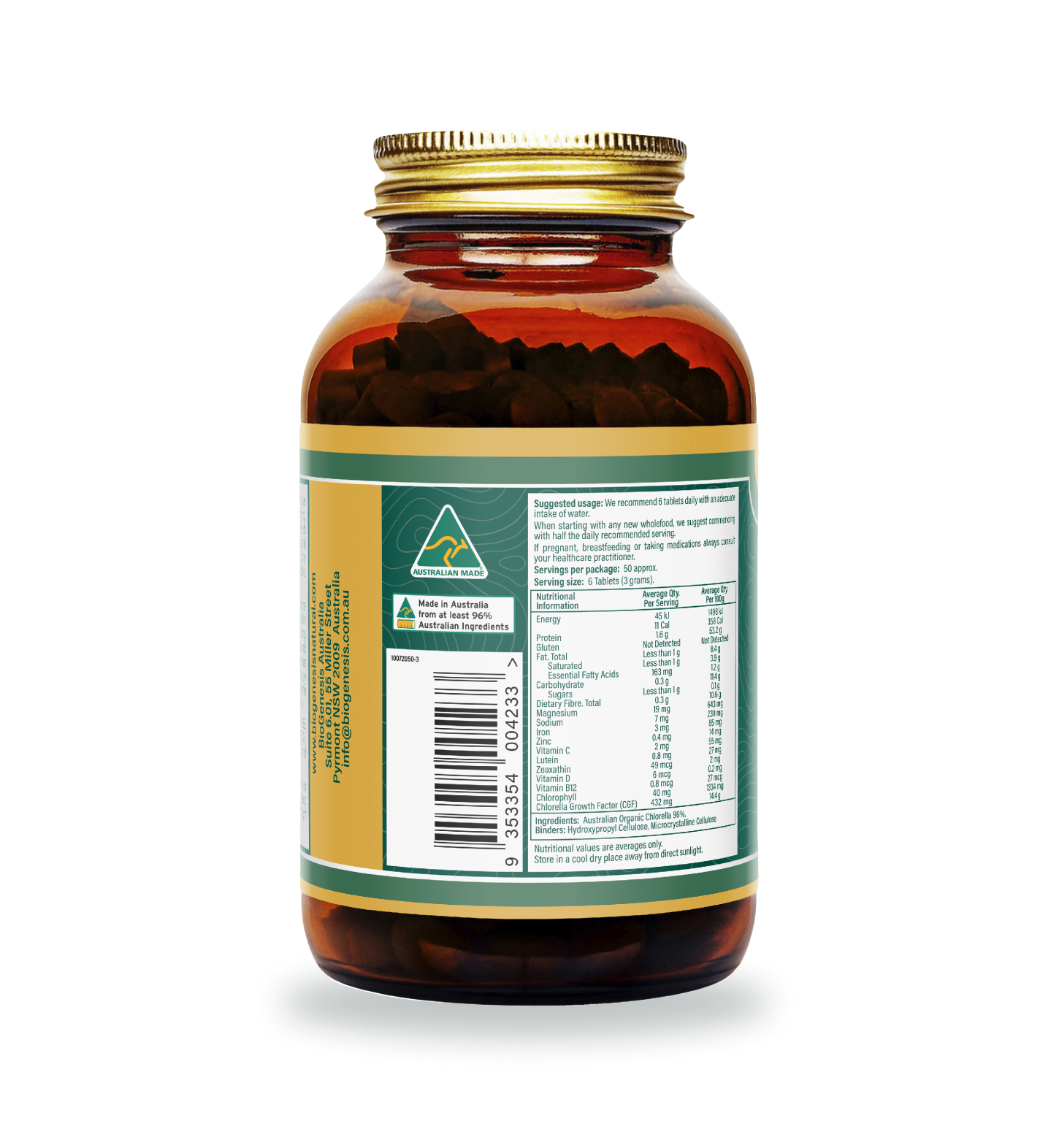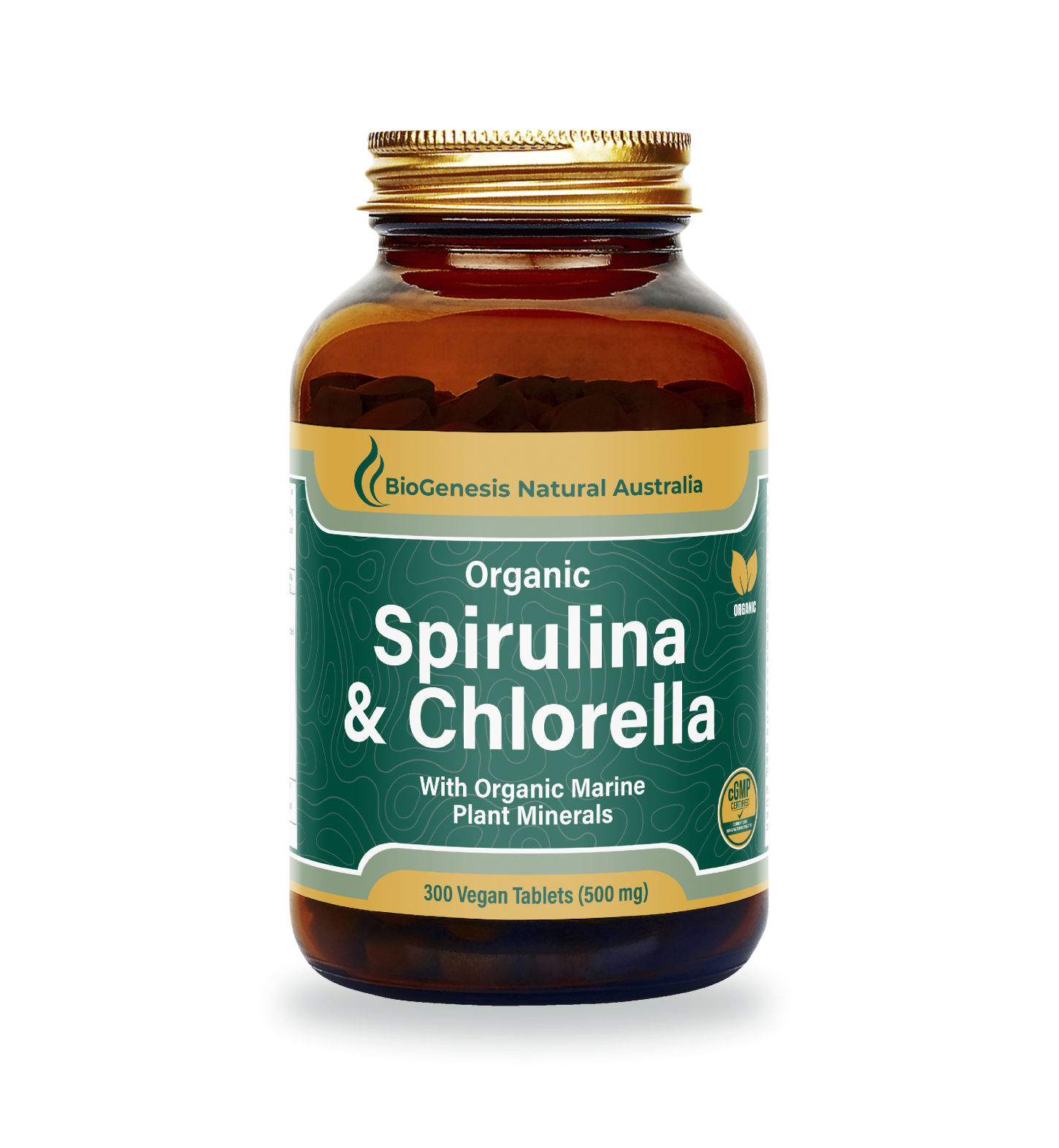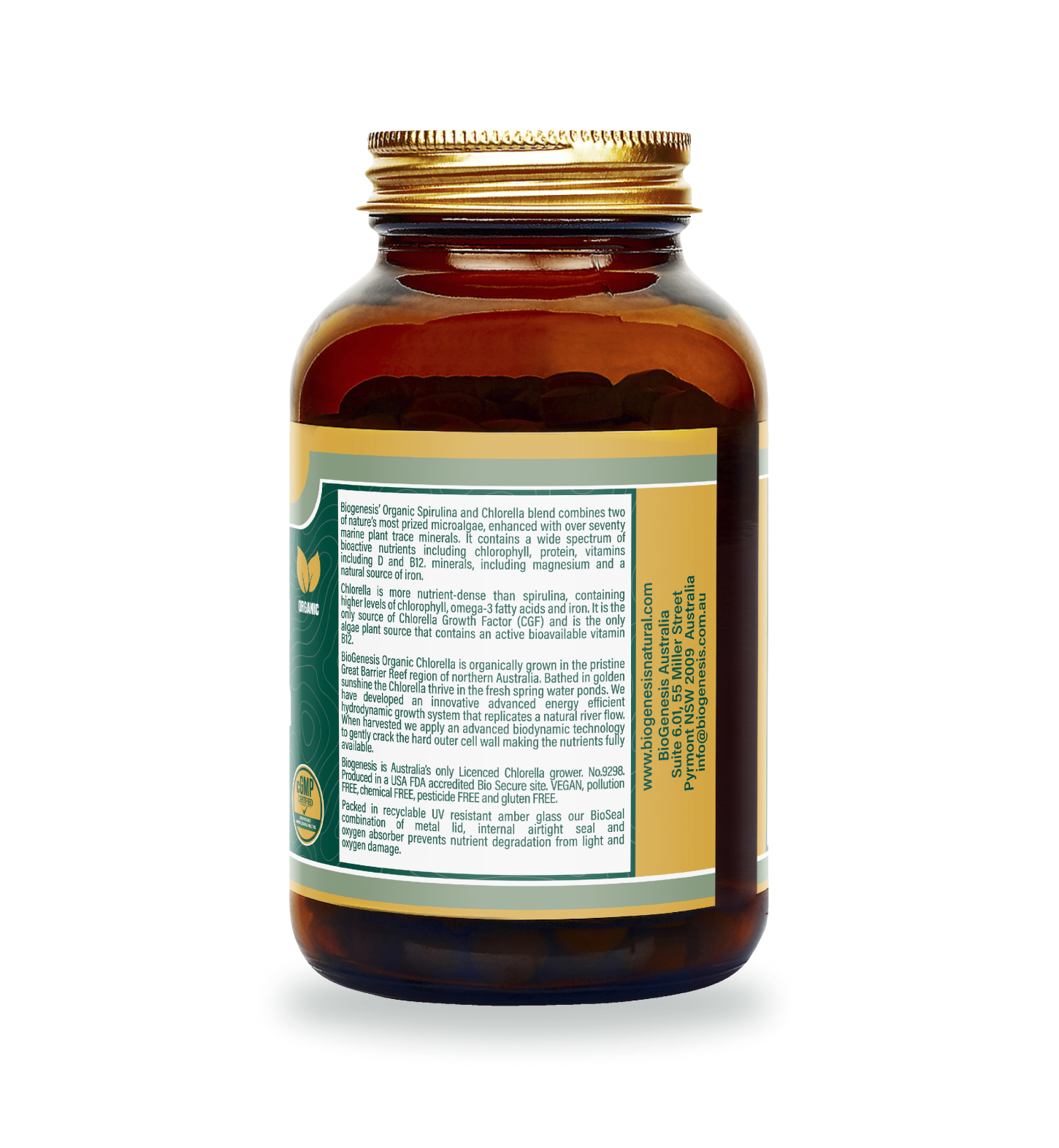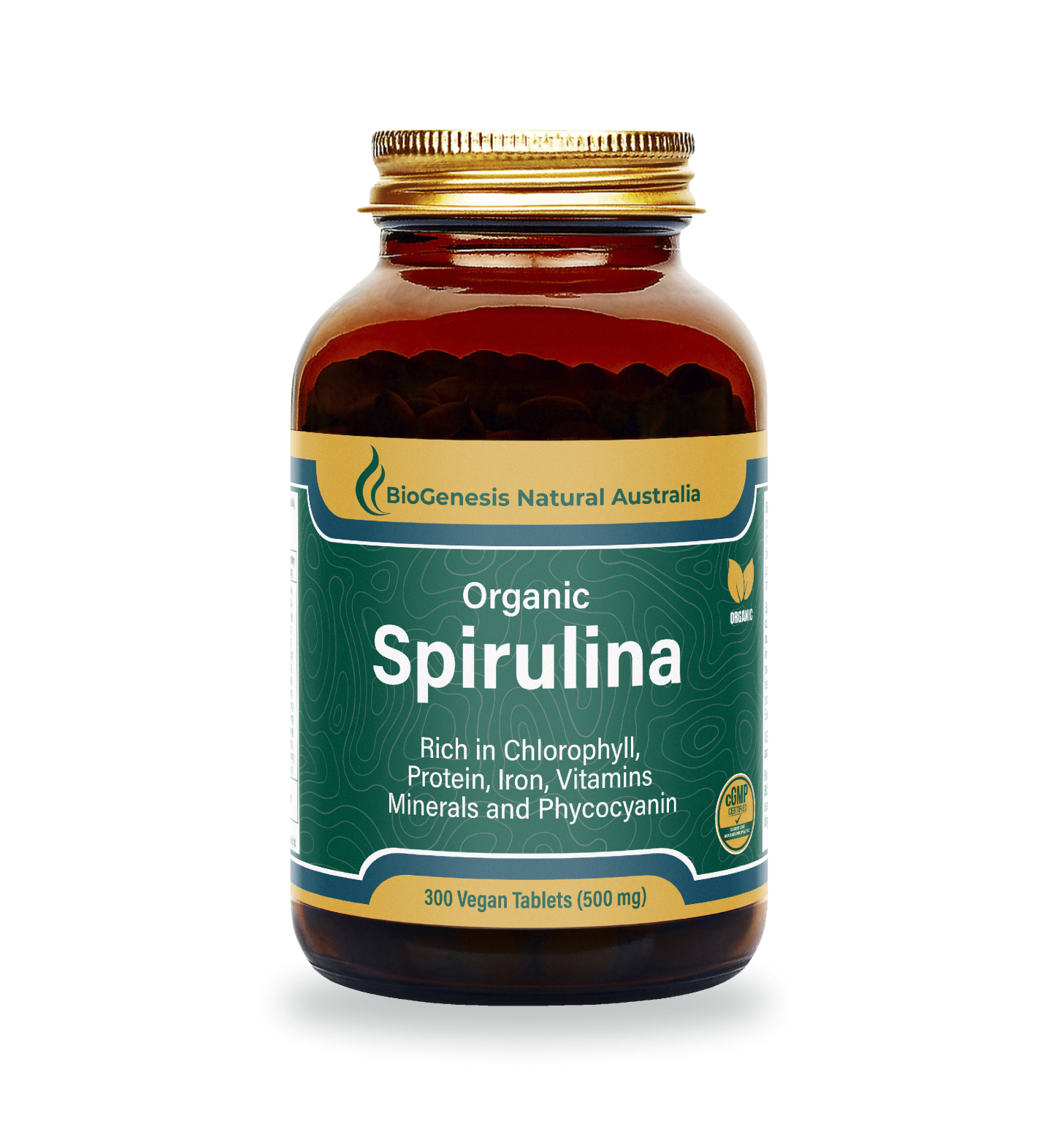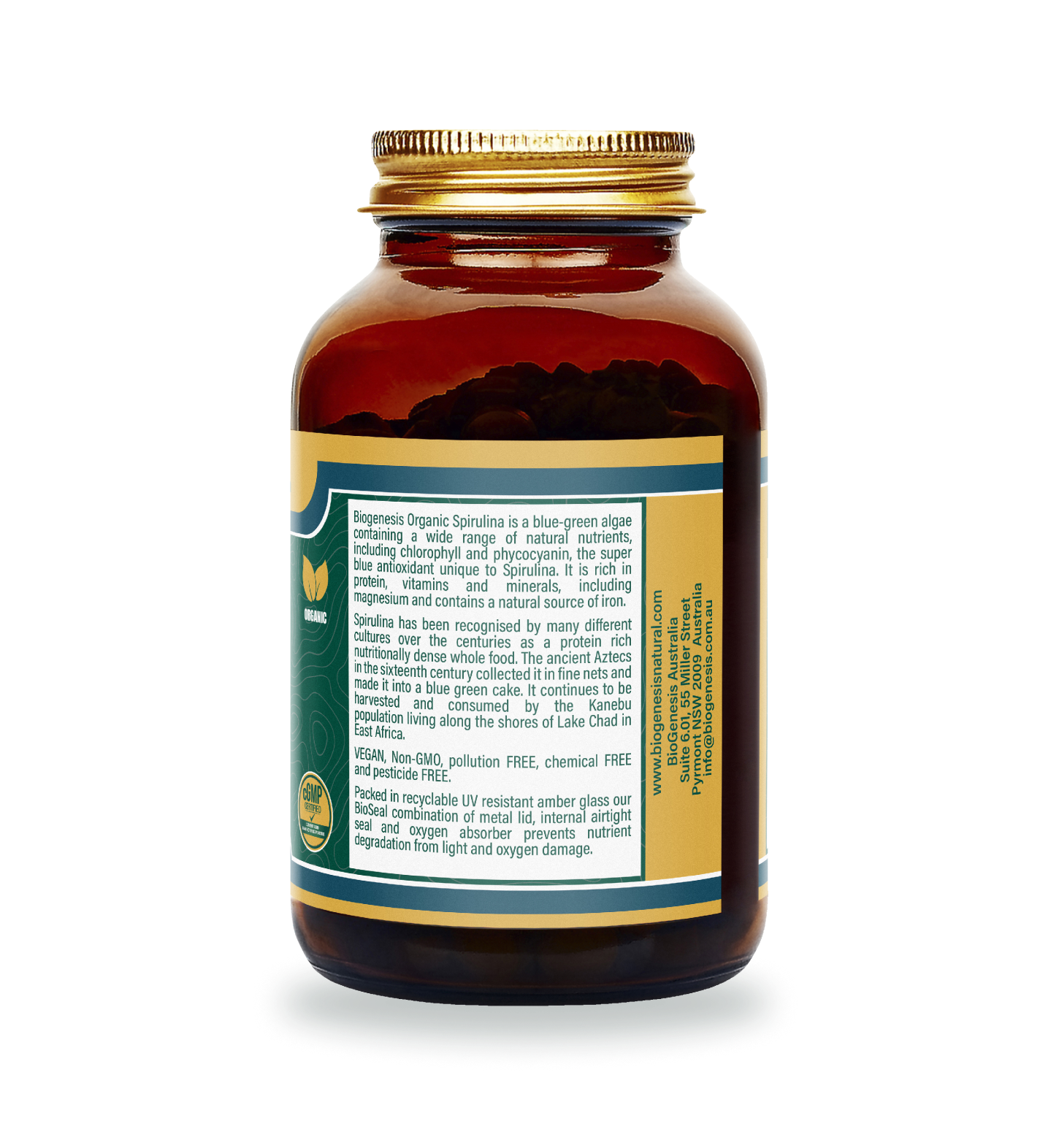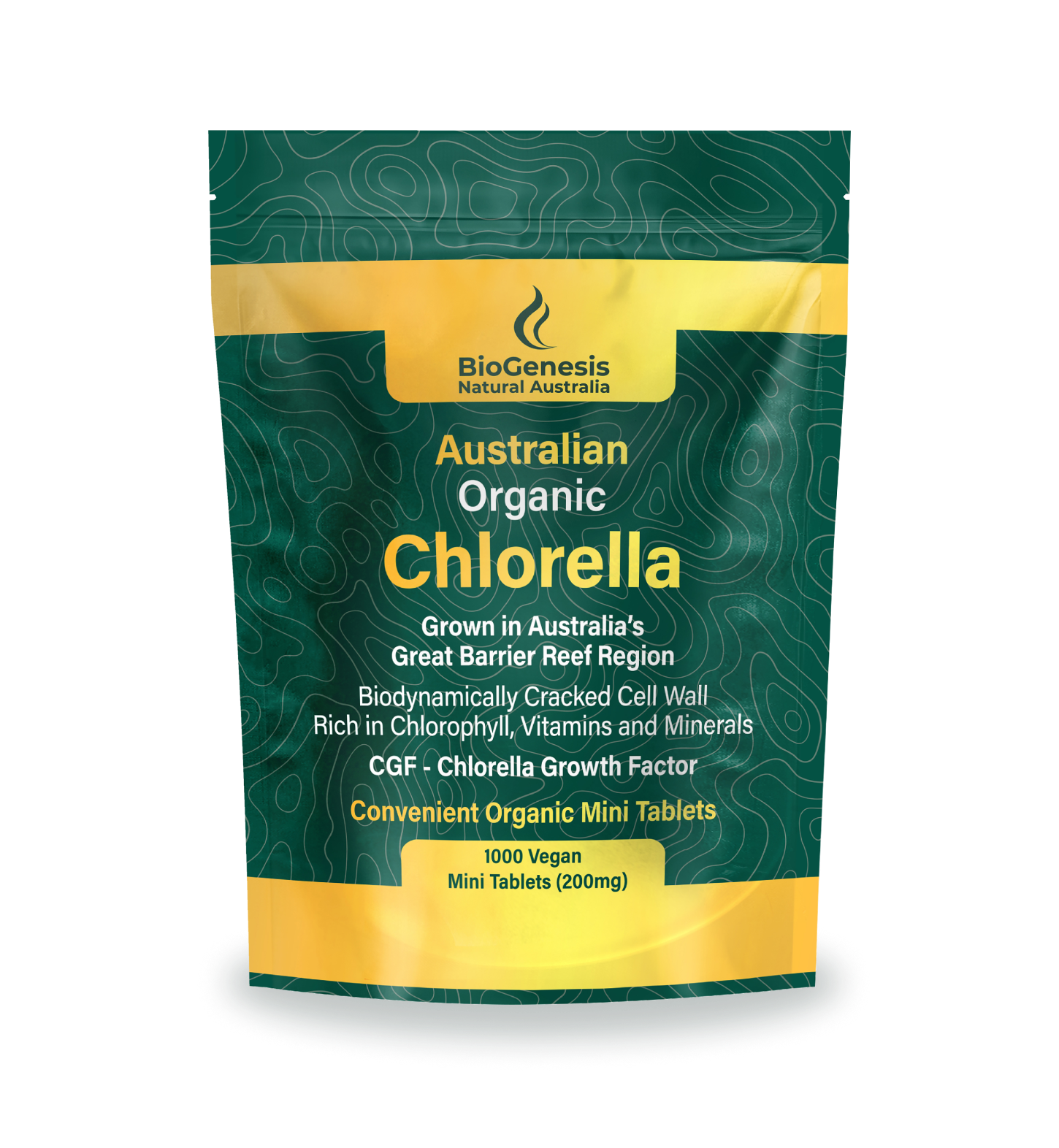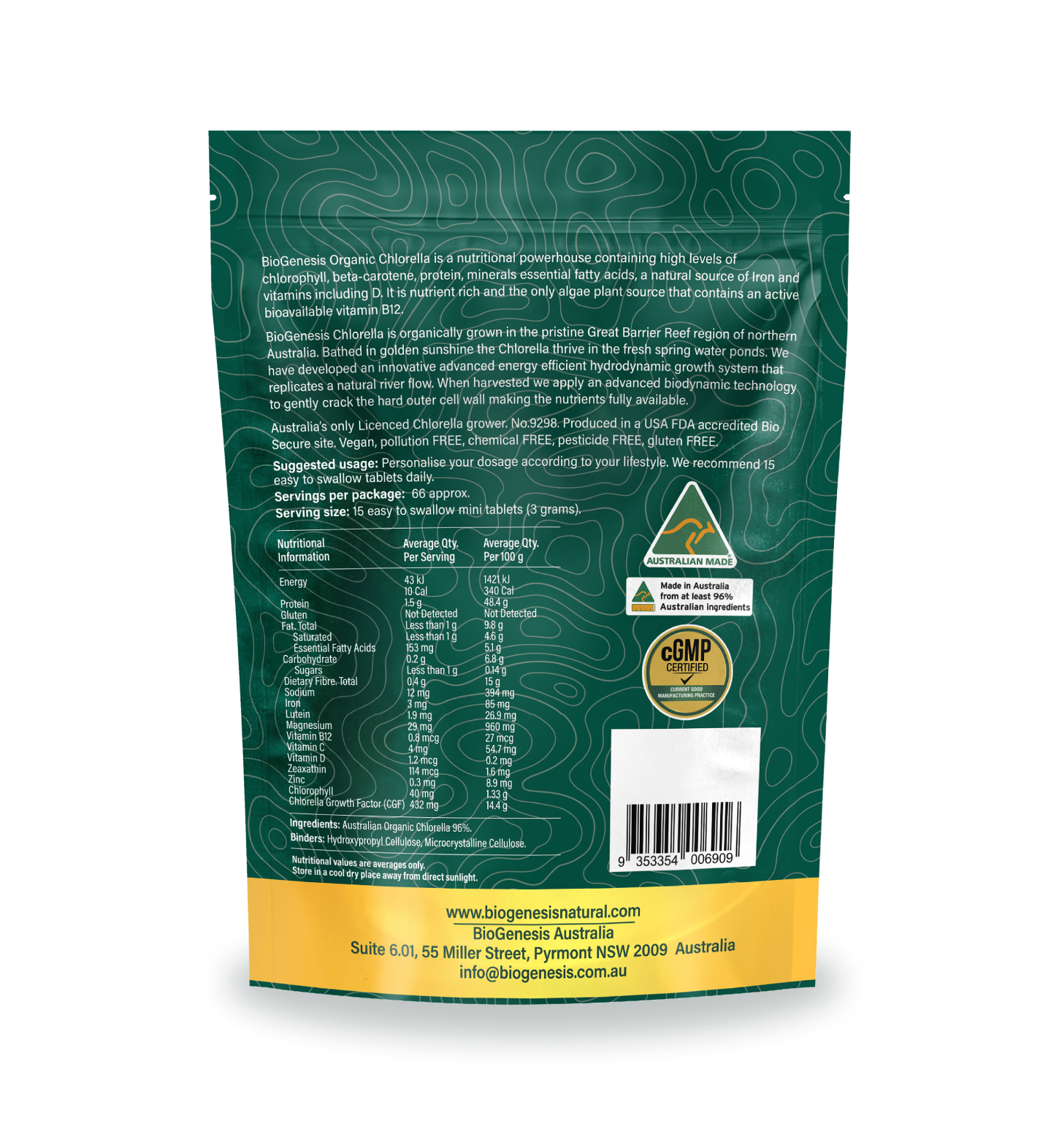Chlorella is a green, unicellular alga that is a superfood containing almost all the nutrients required for optimizing your health.
Additionally, chlorella has more folate (2.5 mg/100 g dry weight) and iron (104 mg/100 g dry weight) than comparable plant-based foods. Due to this, chlorella can help maintain cardiovascular health, promote a healthy pregnancy, and prevent anemia, among other health benefits (Bito, 2020).
Health Benefits of Chlorella Due to Folate and Iron
Unlike animals, plants can produce folate molecules de novo (Gorelova, 2017). Therefore, plant-based foods like spinach and other green leafy vegetables are sources of folates for us. However, studies indicate that spinach has less folate than chlorella. This means that chlorella supplements are a wonderful way for people to get the required folate into their diets (Woortman, 2020).
Similarly, chlorella also contains more iron than other plant-derived foods. It is also a rich source of vitamin C, which aids in iron absorption (Panahi, 2016).
Read on to learn about few health benefits of chlorella due to folate and iron.
1. Great For Energy
Folate, together with vitamins B12 and B6, helps to regulate elevated levels of homocysteine in the blood. Increased homocysteine levels may raise the risk of heart and blood vessel disease (cardiovascular disease) (Selhub, 1995), (Ganguly, 2015).
Homocysteine is a non-protein-forming amino acid generated as a byproduct of methionine metabolism and converted to cystathionine by cystathionine-synthetase, an enzyme dependent on vitamin B6. Methionine synthase, an enzyme dependent on vitamin B12, is capable of remethylating homocysteine back to methionine. Folate is also necessary for the remethylation of homocysteine through the production of 5-methyltetrahydrofolate (Ganguly, 2015).
Hyperhomocysteinemia is caused by deficiencies in vitamins B12, B6, and folate (Forges, 2007). Several clinical studies show that atherosclerosis is linked to low folate levels (Bunout, 2000).
2. Promotes Healthy Pregnancy
Folate insufficiency before and throughout pregnancy is linked to neural tube defects in babies. Neural tube abnormalities such as spina bifida can occur during the first few months of pregnancy. Research indicates that folate supplementation help reduces neural tube birth abnormalities (Czeizel, 2013).
During pregnancy, folate helps your fetus's skull, brain, and spinal cord form, making it an essential nutrient for neurodevelopment. Folate is one of the vital vitamins for developing the neurological system. In addition, folate is necessary for normal cell growth and function, including the production of red blood cells.
It is crucial to take a prenatal vitamin that contains folate if you are pregnant or planning to conceive (Pitkin, 2007).
3. Good For Eye Health
Age-related macular degeneration (AMD) is an eye illness that damages your central vision, although its cause is not entirely understood. In addition to inflammation and oxidative stress, it is believed that high homocysteine levels may also have a role.
According to a study, taking folate on a regular basis can reduce the incidence of AMD by up to 40% (Christen, 2009).
4. Facilitates Everyday Body Processes
Your body needs iron to synthesize hemoglobin, a protein in red blood cells that helps transport oxygen from the lungs to the rest of the body, and myoglobin, a protein that transports oxygen to your muscles. This is essential for efficient daily bodily functions, immune system function, energy, and more (NIH).
Iron also contributes to the creation of some hormones by promoting the health of thyroid gland, which is responsible for the synthesis and regulation of numerous hormones in your body (Chatterjee, 2021).
Chlorella supplements provide adequate amounts of iron to facilitate your body's processes, reduce fatigue, and enhance energy levels for daily activities.
5. Helps with Iron Deficiency
During pregnancy, the blood volume in a woman's body rises, necessitating a higher iron intake for both her and the growing child. If a woman doesn't get enough iron while pregnant, she's more likely to get iron deficiency anemia, and her baby is more likely to be born early or with low iron levels. Iron deficiency may also hinder the infant's cognitive development (NIH).
In addition, the phytates found in grains bind iron, forming an insoluble compound, which significantly reduces iron absorption in the intestines. Thus, vegans and vegetarians may be susceptible to iron-deficiency anemia (Gibson, 2018).
Chlorella products include a considerable amount of iron (104 mg/100 g dry weight), the consumption of which may prevent anemia. Additionally, it contains vitamin C, which aids iron absorption (Bito, 2020).
Chlorella supplementation has been examined for its ability to prevent iron-deficiency anemia in both rats (Gao, 2019) and humans. Oral chlorella supplementation (6 g/day) for 12-18 weeks lowered indicators of anemia compared to the control group, showing that chlorella supplementation may lowers the risk of pregnancy-associated anemia in a cohort of 32 women in the second and third trimesters of pregnancy (Nakano, 2010).
6. May Assist With Blood Issues
Researchers believe that chlorella, due to the presence of folate and iron, may help reduce high blood pressure in pregnancy (Nakano, 2010). Folate reduces homocysteine levels.
Supplementing with 6 grams of chlorella per day from weeks 12-18 of pregnancy reduced anemia and symptoms of pregnancy-induced hypertension in 32 pregnant Japanese women (Nakano, 2010).
7. Promotes Hair, Skin, And Nail Health
Another benefit of iron is that it is needed to make connective tissue. Therefore, a high iron level is essential for healthy hair, skin, and nails (Sato, 1991). If you notice that your hair, nails, or skin are brittle or lifeless, you may want to check your iron levels.
Remember that iron is necessary for the formation of hemoglobin and the transportation of oxygen throughout the body. When this process is inefficient due to low iron levels, the body's cells may not receive adequate oxygen, resulting in brittle nails, hair loss, and a yellow complexion (American Society of Hematology).
Taking chlorella supplements may provide you required iron content for promoting healthy hair, skin, and nails.
8. Improves Athletic Performance
Your aerobic capacity may be affected by your iron stores since iron is essential for creating energy and carrying oxygen to your cells. Simply said, if oxygen cannot flow through your body rapidly enough, you may feel weary and weak, which is not ideal when jogging, swimming, or working out (Rubeor, 2018).
Thus, chlorella may improve your athletic performance due to iron, folate, and other energy-boosting vitamins and minerals.
The Bottom Line
Chlorella is an algae that delivers a powerful nutritional punch because it is rich in numerous vitamins, minerals, and antioxidants. Folate and iron are only found in plant-based foods. But chlorella has more folate and iron than other plant-based foods you can readily absorb.
References
Bito, T., Okumura, E., Fujishima, M., & Watanabe, F. (2020). Potential of Chlorella as a Dietary Supplement to Promote Human Health. Nutrients, 12(9), 2524. https://www.ncbi.nlm.nih.gov/pmc/articles/PMC7551956/
Gorelova, V., Ambach, L., Rébeillé, F., Stove, C., & Van Der Straeten, D. (2017). Folates in Plants: Research Advances and Progress in Crop Biofortification. Frontiers in chemistry, 5, 21. https://pubmed.ncbi.nlm.nih.gov/28424769/
Woortman, D. V., Fuchs, T., Striegel, L., Fuchs, M., Weber, N., Brück, T. B., & Rychlik, M. (2020). Microalgae a Superior Source of Folates: Quantification of Folates in Halophile Microalgae by Stable Isotope Dilution Assay. Frontiers in bioengineering and biotechnology, 7, 481. https://pubmed.ncbi.nlm.nih.gov/32039182/
Panahi, Y., Darvishi, B., Jowzi, N., Beiraghdar, F., & Sahebkar, A. (2016). Chlorella vulgaris: A Multifunctional Dietary Supplement with Diverse Medicinal Properties. Current pharmaceutical design, 22(2), 164–173. https://pubmed.ncbi.nlm.nih.gov/26561078/
Selhub, J., Jacques, P. F., Bostom, A. G., D'Agostino, R. B., Wilson, P. W., Belanger, A. J., O'Leary, D. H., Wolf, P. A., Schaefer, E. J., & Rosenberg, I. H. (1995). Association between plasma homocysteine concentrations and extracranial carotid-artery stenosis. The New England journal of medicine, 332(5), 286–291. https://pubmed.ncbi.nlm.nih.gov/7816063/
Ganguly, P., & Alam, S. F. (2015). Role of homocysteine in the development of cardiovascular disease. Nutrition journal, 14, 6. https://pubmed.ncbi.nlm.nih.gov/25577237/
Forges, T., Monnier-Barbarino, P., Alberto, J. M., Guéant-Rodriguez, R. M., Daval, J. L., & Guéant, J. L. (2007). Impact of folate and homocysteine metabolism on human reproductive health. Human reproduction update, 13(3), 225–238. https://pubmed.ncbi.nlm.nih.gov/17307774/
Bunout, D., Petermann, M., Hirsch, S., de la Maza, P., Suazo, M., Barrera, G., & Kauffman, R. (2000). Low serum folate but normal homocysteine levels in patients with atherosclerotic vascular disease and matched healthy controls. Nutrition (Burbank, Los Angeles County, Calif.), 16(6), 434–438. https://pubmed.ncbi.nlm.nih.gov/10869899/
Czeizel, A. E., Dudás, I., Vereczkey, A., & Bánhidy, F. (2013). Folate deficiency and folic acid supplementation: the prevention of neural-tube defects and congenital heart defects. Nutrients, 5(11), 4760–4775. https://pubmed.ncbi.nlm.nih.gov/24284617/
Pitkin R. M. (2007). Folate and neural tube defects. The American journal of clinical nutrition, 85(1), 285S–288S. https://pubmed.ncbi.nlm.nih.gov/17209211/
Christen, W. G., Glynn, R. J., Chew, E. Y., Albert, C. M., & Manson, J. E. (2009). Folic acid, pyridoxine, and cyanocobalamin combination treatment and age-related macular degeneration in women: the Women's Antioxidant and Folic Acid Cardiovascular Study. Archives of internal medicine, 169(4), 335–341. https://www.ncbi.nlm.nih.gov/pmc/articles/PMC2648137/
Iron, Fact Sheet for Health Professionals. https://ods.od.nih.gov/factsheets/Iron-HealthProfessional/
Chatterjee, S., Chakrabarti, P., & Sinhamahapatra, P. (2021). Relationship between iron metabolism and thyroid hormone profile in hypothyroidism. International journal of research in medical sciences, 9, 2330–6012. https://www.msjonline.org/index.php/ijrms/article/view/9269
Gibson, R. S., Raboy, V., & King, J. C. (2018). Implications of phytate in plant-based foods for iron and zinc bioavailability, setting dietary requirements, and formulating programs and policies. Nutrition reviews, 76(11), 793–804. https://pubmed.ncbi.nlm.nih.gov/30010865/
Gao, F., Guo, W., , Zeng, M., , Feng, Y., , & Feng, G., (2019). Effect of microalgae as iron supplements on iron-deficiency anemia in rats. Food & function, 10(2), 723–732. https://pubmed.ncbi.nlm.nih.gov/30664135/
Nakano, S., Takekoshi, H., & Nakano, M. (2010). Chlorella pyrenoidosa supplementation reduces the risk of anemia, proteinuria and edema in pregnant women. Plant foods for human nutrition (Dordrecht, Netherlands), 65(1), 25–30. https://pubmed.ncbi.nlm.nih.gov/20013055/
Sato S. (1991). Iron deficiency: structural and microchemical changes in hair, nails, and skin. Seminars in dermatology, 10(4), 313–319. https://pubmed.ncbi.nlm.nih.gov/1764360/
Iron-Deficiency Anemia. American Society of Hematology. https://www.hematology.org/education/patients/anemia/iron-deficiency
Rubeor, A., Goojha, C., Manning, J., & White, J. (2018). Does Iron Supplementation Improve Performance in Iron-Deficient Nonanemic Athletes?. Sports health, 10(5), 400–405. https://www.ncbi.nlm.nih.gov/pmc/articles/PMC6116100/










